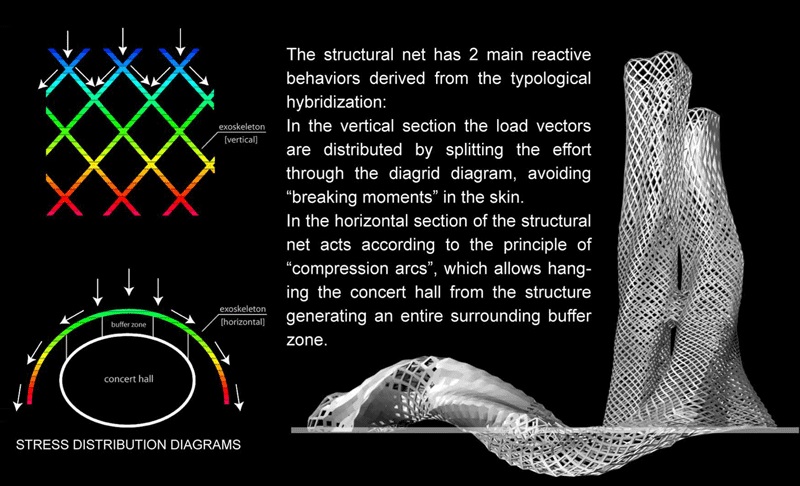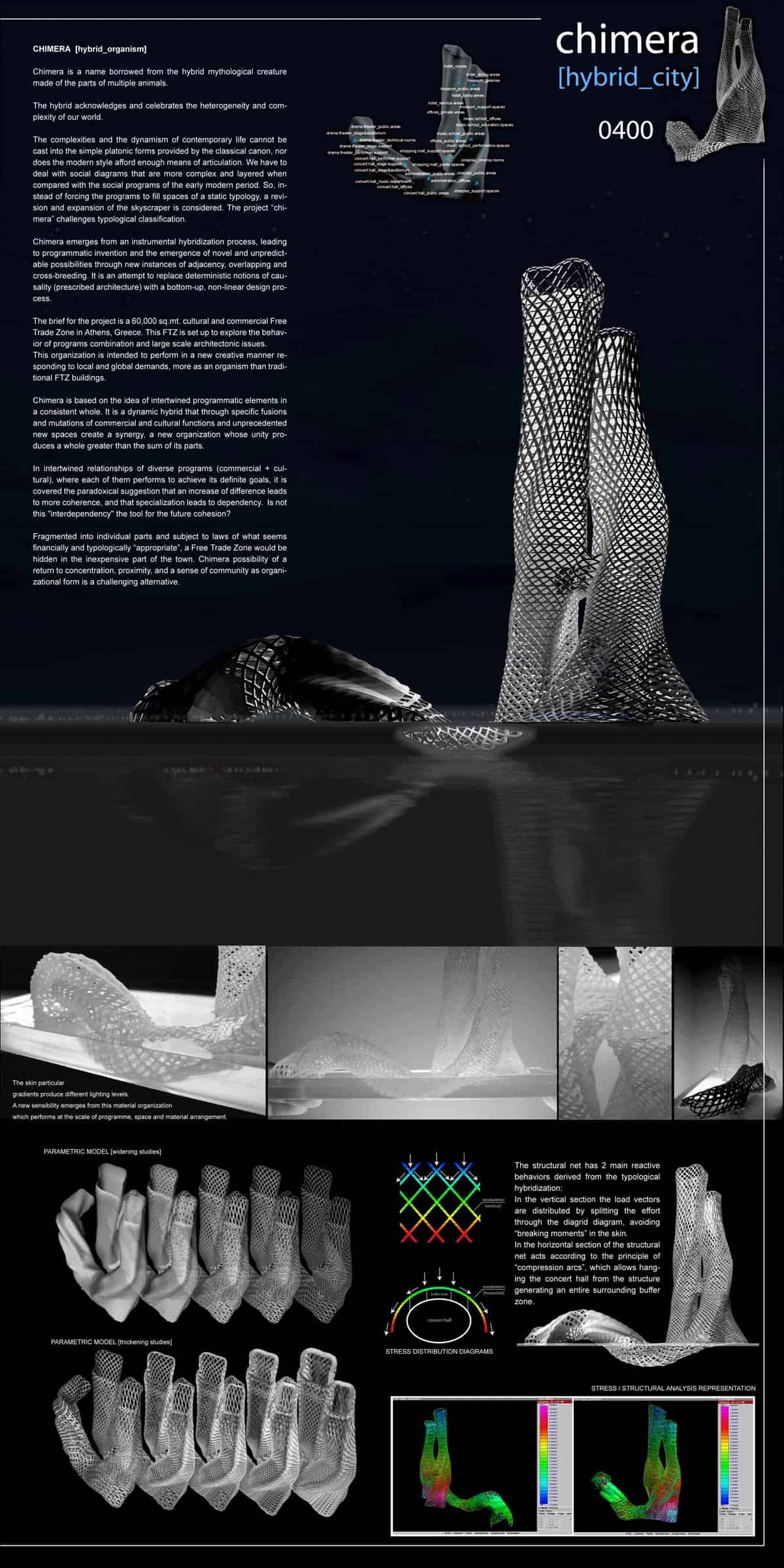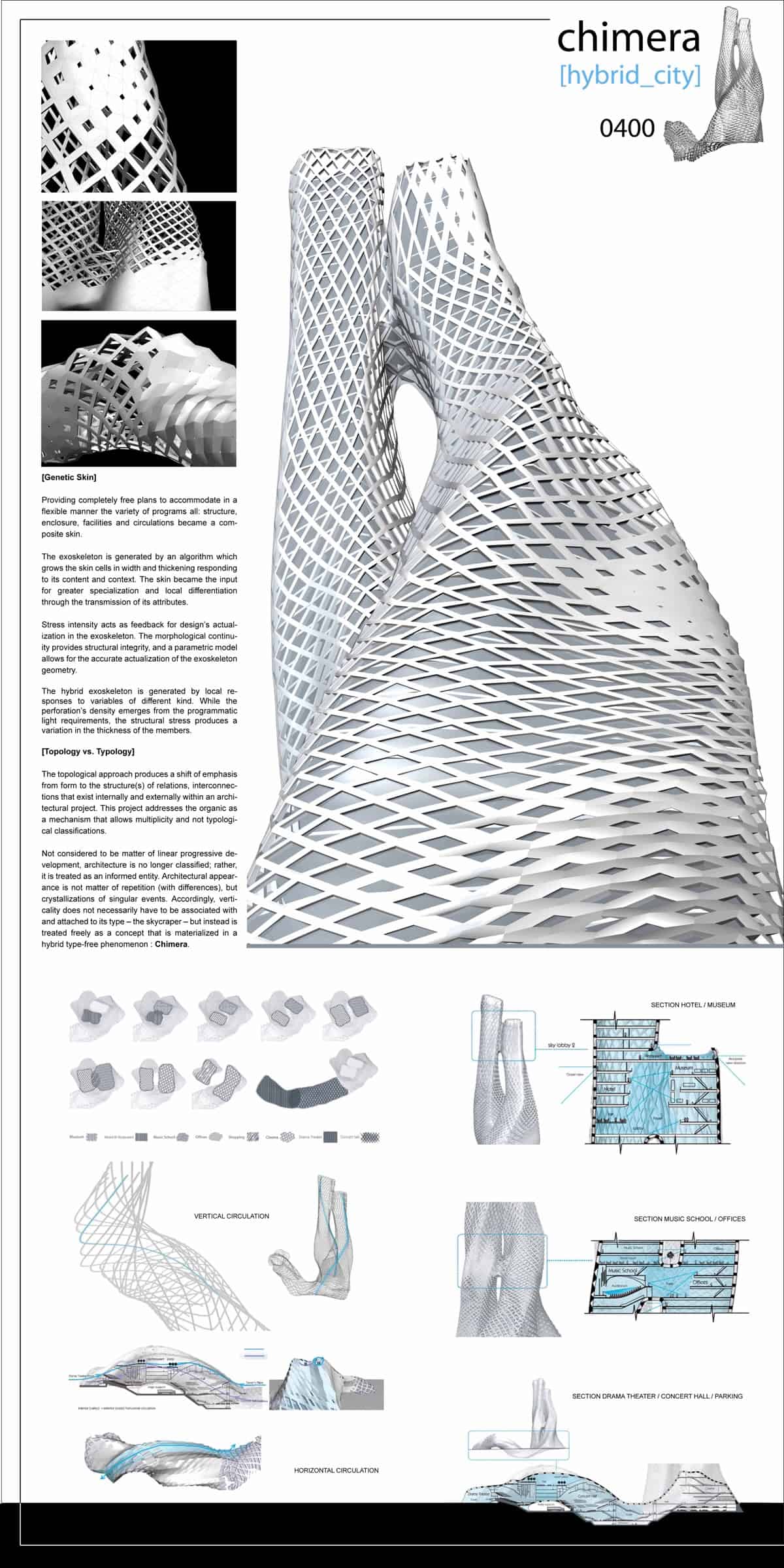Special Mention
2007 Skyscraper Competition
Paula Tomisaki
United States

The complexities and the dynamism of contemporary life cannot be cast into the simple platonic forms provided by the classical canon, nor does the modern style afford enough means of articulation. We have to deal with social diagrams that are more complex when compared with the social programs of the early modern period. Instead of forcing the program to fill spaces of a static typology, a revision and expansion of the skyscraper is considered. The project “Chimera” challenges typological classification. Chimera is a name borrowed from the hybrid mythological creature made of parts of multiple animals. The hybrid acknowledges and celebrates the heterogeneity and complexity of our world.
The project emerges from an instrumental hybridization process, leading to programmatic invention and the emergence of novel and unpredictable possibilities through new instances of adjacency, overlapping and cross-breeding. It is an attempt to replace deterministic notions of causality (prescribed architecture) with a bottom-up, non-linear design process. This proposal is set up to explore the behavior of programs combination and large scale architectonic issues. The project is a 60,000 sqm cultural and commercial Free Trade Zone in Athens, Greece.
Chimera is based on the idea of intertwined programmatic elements in a consistent whole. It is a dynamic hybrid that through specific fusions and mutations of commercial and cultural functions and unprecedented new spaces, create a synergy, a new organization whose unity produces a whole greater than the sum of its parts.
Genetic Skin
Providing completely free plans to accommodate in a flexible manner, the variety of programs, including structure, enclosure, facilities and circulations, became a composite skin. The exoskeleton is generated by an algorithm which grows the skin cells in width and thickening, responding to its content and context. The skin became the input for greater specialization and local differentiation through the transmission of its attributes. Stress intensity acts as feedback for the exoskeleton’s design. The morphological continuity provides structural integrity, and a parametric model allows for the accurate actualization of the exoskeleton geometry. This structural net has two main reactive behaviors derived from the typological hybridization. On the one hand, in the vertical section the load vectors are distributed by splitting the effort thru the diagrid diagram, avoiding “breaking moments” in the skin. On the other hand, the horizontal section of the structural net acts according to the principle of “compression arcs”, which allows hanging the concert hall from the structure, generating a surrounding buffer zone.
Topology vs Typology
The topological approach produces a shift of emphasis from form to the structure(s) of relations, interconnections that exist internally and externally within an architectural project. This project addresses the organic as a mechanism that allows multiplicity and not typological classifications.


This work is licensed under a Creative Commons License permitting non-commercial sharing with attribution. https://creativecommons.org/licenses/by-nc-nd/4.0/



